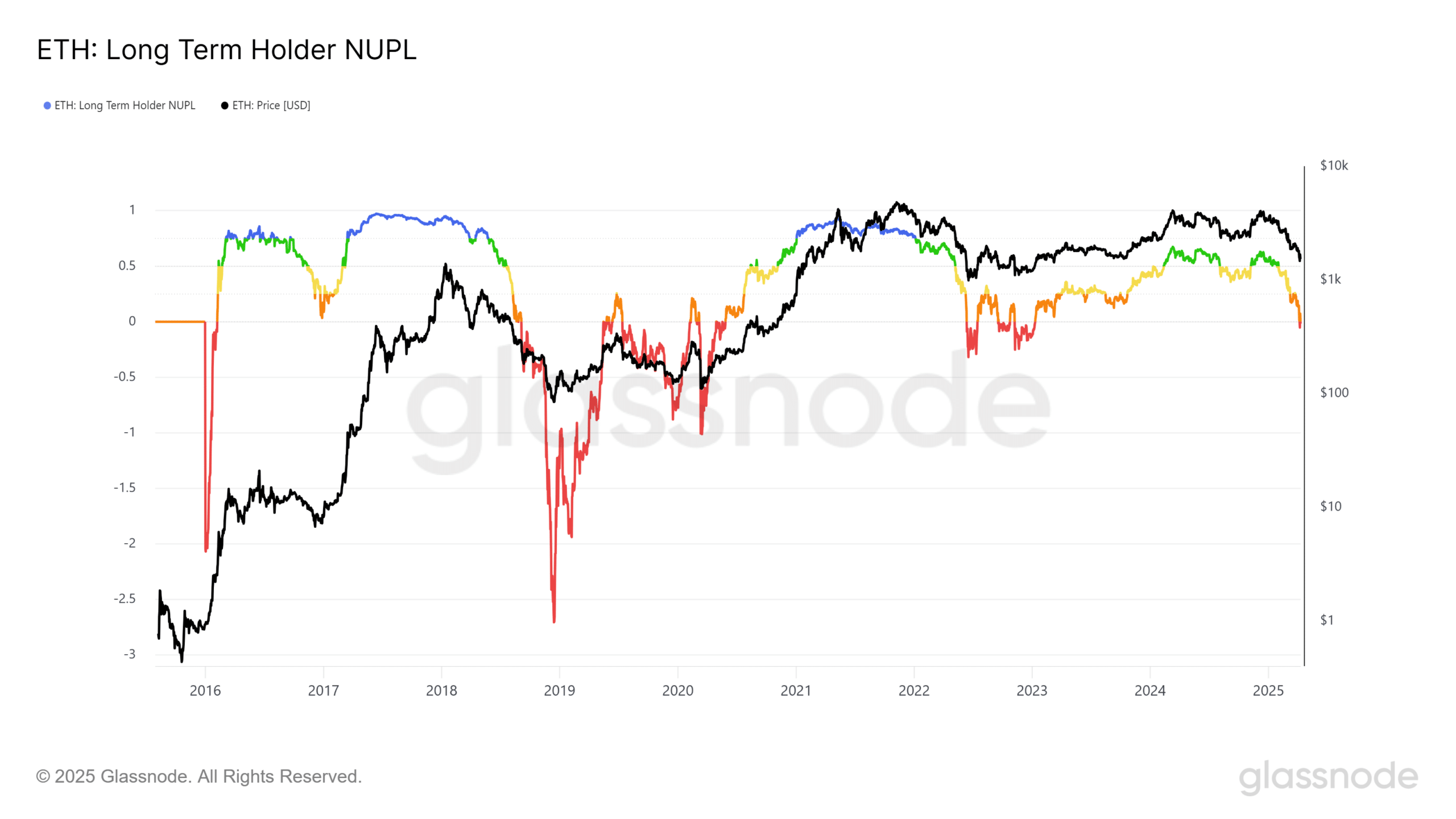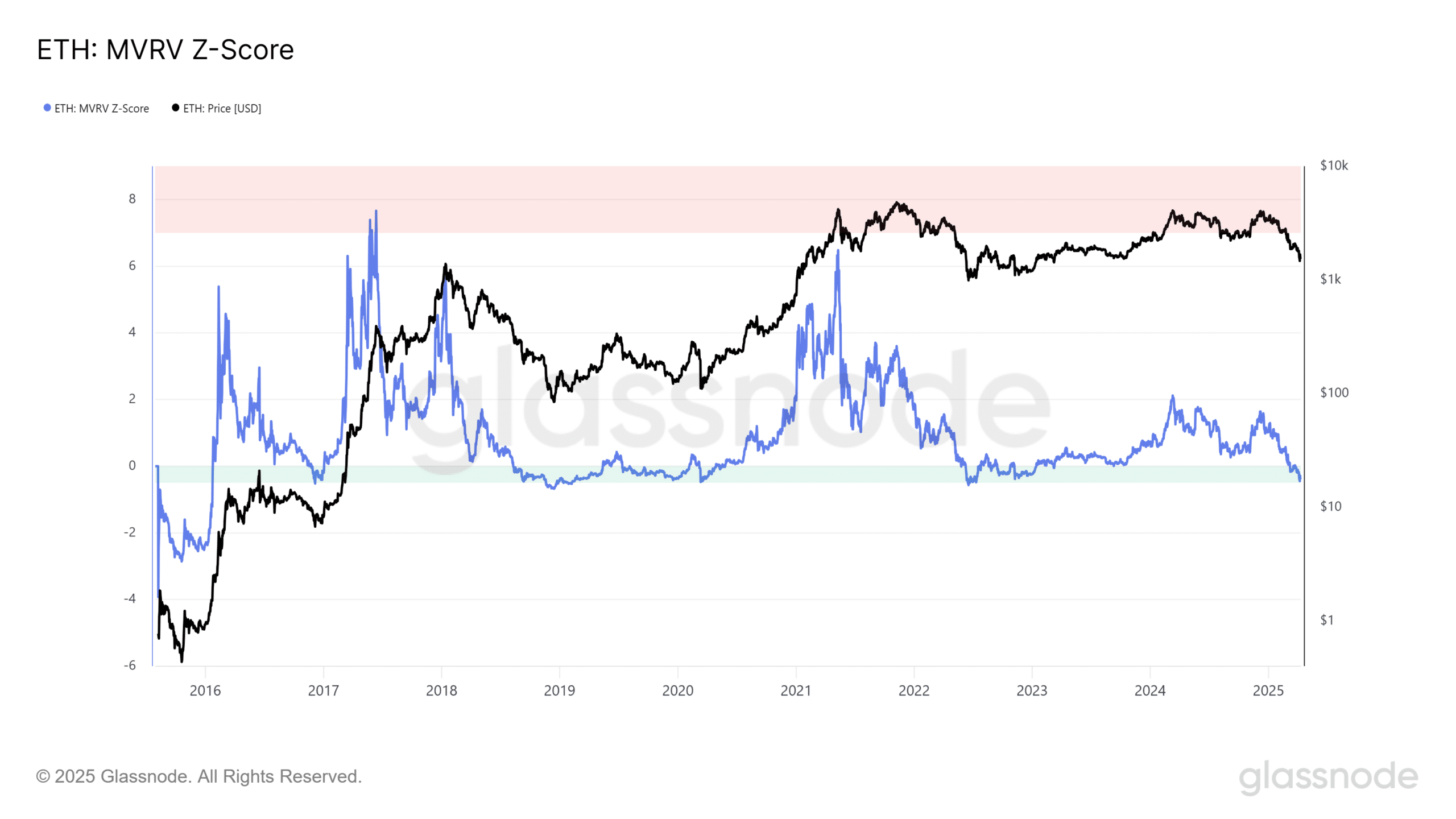-
Recent activity among dormant Ethereum whales has raised concerns about long-term holder (LTH) capitulation amid a pressing market downturn.
-
This significant sell-off follows Ethereum’s breach of a crucial support level, marking a substantial shift in market dynamics and investor sentiment.
-
“The exit strategy of the whales suggests a systemic unwinding of positions, indicating deeper market fears,” stated an analyst from COINOTAG.
Ethereum’s dormant whale activity signals potential capitulation as the asset breaches critical support; LTHs are unwinding positions amid market fears.
Dormant Whale Activity Signals Market Uncertainty
Ethereum (ETH) has recently seen a surge in activity from dormant whales, raising alarms among investors as long-term holders appear to be capitulating. Following a significant decline, ETH’s price has dropped below key support levels, with one prominent whale liquidating a staggering 7,974 ETH valued at approximately $11.8 million. This move not only signifies unrest within the whale community but also mirrors broader market de-risking trends.
Market Dynamics and Price Trends
In the wake of ETH’s drop below the $1,500 mark—an unprecedented low for over two years—large holders appear to be strategically unwinding their positions. They are opting for incremental sell-offs to minimize market impact and maximize returns before potential further price corrections. This strategic approach to distribution is evident in trading patterns observed over recent weeks.

Source: Glassnode
Additionally, Ethereum’s Net Unrealized Profit and Loss (NUPL) has recently turned negative for the first time in over three years. This negative signal traditionally indicates distress among holders, particularly when ETH has historically faced downward pressure.
On-Chain Metrics Reveal Undervaluation
As of the latest analysis, the Market Value to Realized Value (MVRV) ratio for Ethereum stands at 0.76. This figure indicates that ETH is trading at a significant discount of 24% relative to its average acquisition price across the market, highlighting the perilous state of long-term holders, many of whom are currently facing losses.

Source: Glassnode
Historically, periods of similar undervaluation have preceded substantial recoveries in the price of ETH. For example, during July 2022, Ethereum successfully rallied by an impressive 85% after consolidating in a similar price range. However, the current atmosphere is overshadowed by external factors, including widespread fear, uncertainty, and doubt (FUD) in the market, creating an environment of hesitation among investors.
Long-term Outlook and Potential Risks
The continuation of net outflows into spot exchanges, coupled with the activity of long-term holders selling off, places Ethereum in a precarious position. If this trend persists, ETH could face deeper corrections, potentially falling below the resistance level of $1,400 in the days ahead. The current market structure mirrors that of 2022, raising questions about the possibility of a new capitulation event.
Conclusion
In summary, Ethereum’s current market conditions indicate significant stress within the holder base, particularly among long-term investors. The recent activity from dormant whales underscores a pivotal moment for ETH, with many selling in a phased manner rather than all at once. Investors should monitor these developments closely, as the likelihood of capitulation increases with ongoing market pressures and FUD. The unfolding situation highlights both the vulnerabilities and potential recovery patterns Ethereum may face in the coming weeks.
